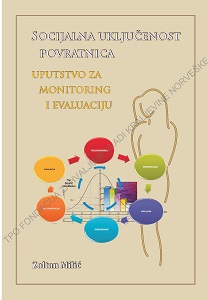Socijalna uključenost povratnica u Bosni i Hercegovini - Uputstvo za monitoring i evaluaciju
Social Inclusion of Female Returnees in Bosnia and Herzegovina - Guidelines for Monitoring and Evaluation
Author(s): Zoltan Milić
Subject(s): Gender Studies, Migration Studies, Socio-Economic Research, Corruption - Transparency - Anti-Corruption, Asylum, Refugees, Migration as Policy-fields
Published by: Transkulturna Psihosocijalna Obrazovna Fondacija (TPO Foundation)
Keywords: gender; female; returnees; social inclusion; BiH; monitoring; evaluation; guidelines;
Summary/Abstract: Monitoring represents a continual activity which encompassess the systemic data collection on specific indicators, which provides the clear indication to managers and stakeholders of various programs and projects on the progress towards set objectives. Evaluation on the other hand means the systemic and objective assessment of ongoing or completed programs, projects and policies, their design, implementation and results. Combined, purpose of monitoring and evaluation is to establish goal relevance and determine level of attainment of those goals; to determine efficiency and effectiveness, effects and sustainability of the results achieved by implementation of program, project or policy. Evaluation should provide reliable and useful information for incorporation into decision-making processes. Purpose of this Manual is to provide basic information to current and future monitoring and evaluation personnel working on minority population social inclusion programs on how to monitor and evaluate their programs and project. The forms, methods and procedures listed in the Manual should not be considered set in stone. After all, monitoring and evaluation, as well as any other analytical discipline, are dependent on logic, commons sense and the creativeness of the analysts. The Manual additionally contains guidelines and examples of the statistical data analysis and the results presentation. However, considering the breath and degree of difficulty involved with some statistical concepts, these guidelines focused on the descriptive statistics which has a wide range of applications in monitoring and evaluation of social programs. The more sophisticated statistical methods and tests are listed but the procedures on how to do those tests were not elaborated. That segment of the indicator analysis should be left to more experienced analysts, familiar with the statistical science. The intent of this Manual was to describe minimal but sufficient framework for data analysis and presentation and to demonstrate on practical examples what the purpose of monitoring and evaluation in management practices truly represent. We hope that we have succeeded in that endeavor.
- Page Count: 80
- Publication Year: 2010
- Language: Bosnian
- Content File-PDF
- Introduction

